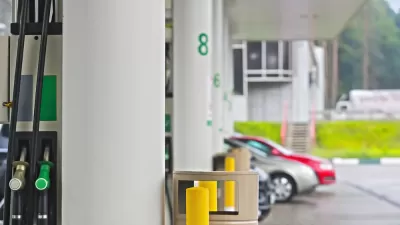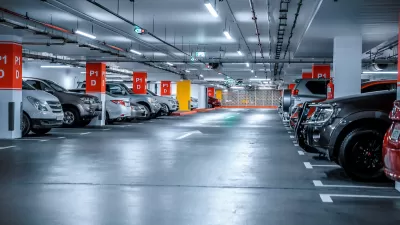Ten years ago, British Columbia launched North America's first carbon tax. This month, Premier John Horgan unveiled the long awaited climate plan, CleanBC, that aims to reduce greenhouse gas emissions 40 percent below 2007 levels by 2030.

"B.C. Premier John Horgan unveiled details Wednesday of the [New Democratic Party's] long-awaited plan to reduce greenhouse gas emissions, calling for aggressive reductions targeted at industry, transportation and housing," reports Gordon Hoekstra for the Vancouver Sun on Dec. 5.
In addition to the 2030 target, the plan, known as CleanBC, calls for reducing greenhouse gas emissions 60 percent below 2007 levels by 2040, and 80 percent by 2050.
Transportation
The plan includes a recently announced requirement that by 2040 all new vehicles will be zero-emission. The idea is to push the change through incentives, such as rebates [up to $6,000] to buy electric vehicles and install more charging stations in the province.
According to The Canadian Press, B.C. Premier John Horgan will introduce legislation in the spring to mandate the sales ban.
The government said the proposed law would set targets of 10 per cent of sales by 2025, 30 per cent by 2030 and 100 per cent by 2040. Horgan said the legislation will be the first major policy commitment of the government’s plan to meet the province’s climate goals.
"The province also will increase the low-carbon fuel standard to 20 per cent by 2030, the same as California," adds Hoekstra.
Housing
In the housing sector, Horgan’s government wants to see retrofits to existing housing, both public and private, including through incentives such as for heat pumps. By 2032, all new buildings must be net-zero energy, meaning they produce the power they need, perhaps through technologies such as solar panels and extracting heat from waste water.
Energy extraction
The largest chunk of reductions unveiled Wednesday are targeted at industry, including electrifying extraction and production of the natural gas and oil sector in northeast B.C., which accounts for 20 per cent of methane emissions.
Renewable energy – a problem of consumption, not generation
In his "Message from the Premier" in the 68-page plan [pdf], Premier Horgan writes:
The unprecedented droughts, wildfires and floods we’ve seen in recent years must serve as notice. Our obligation to this province must be to improve how we live, work and commute – moving forward on a path that makes clean, renewable energy and pollution reduction the norm.
Renewable energy for electricity generation is not a problem, unlike the high-profile renewable portfolio standard in the District of Columbia's climate plan approved by their city council last week. CleanBC's first section, "Introduction: Powering our future," explains why:
Thanks largely to the legacy of BC Hydro, we are already a clean-energy powerhouse. Almost all the electricity we produce [98%] is from clean and renewable resources. But when it comes to the energy we consume in our buildings, cars and industrial operations – nearly three quarters of the energy used across our economy still comes from fossil fuels.
Carbon tax
The plan includes previously announced increases to the carbon tax, which is $35 Canadian, or $25.73 U.S., per metric ton of carbon and will rise to $50 [$36.76 US] per tonne by 2021.
The first carbon tax enacted in North America, the plan is also revenue neutral in that it returned most of the revenue to tax payers by reducing corporate and income taxes. A recent change enacted this year to improve affordability was to increase the Climate Action Tax Credit to $135 per adult and $40 per child. Yes, money in people's pockets.
Prime Minister Justin Trudeau's carbon tax plan for the four provinces that lack carbon prices, uses a similar approach. It takes effect Jan. 1.
The tax was also the model for the unsuccessful Initiative 732 in Washington state in 2016; a proposal in the U.S. by the oil industry-backed Climate Leadership Council, and H.R.7173 - Energy Innovation and Carbon Dividend Act of 2018, sponsored by Reps. Ted Deutch (D-Fla.) and Brian Fitzpatrick (R-Pa.), introduced in Congress on Nov. 27.
Equity impact
"B.C. Premier John Horgan said he thinks that most low- and moderate-income families will find themselves ahead when the cost effects are tallied," reports Hoekstra on Dec. 7 in a follow-up dealing with the plan's impacts on households, which, when implemented, will result in residents "paying more for gasoline, having to switch to electric heat and eventually buy an electric vehicle."
Horgan's assertion is supported by Marc Jaccard, a professor of sustainable energy at Simon Fraser University, who "says not only the carbon tax and energy-switching costs have to be considered, but also grants to retrofit homes and to help move to zero-emission vehicles.
“The net effect of all of this — as far as I can see for middle-class and lower income people — will be positive,” said Jaccard, an expert in models that assess the effectiveness of sustainable energy and climate policies.
Horgan dismissed the "Yellow Vest" backlash in France to planned fuel tax hikes associated with President Emmanuel Macron's green agenda, now withdrawn due to the popular support for the demonstrations.
“We have a decade of experience when it comes to carbon-pricing,” noted Horgan, referring to the carbon tax’s introduction under former-B.C. Liberal premier Gordon Campbell in 2008.
“And we are bringing in changes when it comes to housing affordability, child care, medical services premiums being eliminated, tolls on bridges being eliminated. So we are putting money back in people’s pockets so they can use that money to reduce their impact on the environment and their impact on climate change,” Horgan said.
Additional reading:
- CBC News, Dec. 5: "Rebates, industry incentives at centre of B.C.'s long-term climate plan"
- CleanBC highlights [16-page pdf].
Related:
-
Major Changes Coming to British Columbia's Carbon Tax, September 30, 2017The government of British Columbia, put in power this year with the help of the BC Green Party, is shoring up its climate change action resume.
FULL STORY: B.C.'s clean climate plan targets natural gas and oil sector

Study: Maui’s Plan to Convert Vacation Rentals to Long-Term Housing Could Cause Nearly $1 Billion Economic Loss
The plan would reduce visitor accommodation by 25,% resulting in 1,900 jobs lost.

Alabama: Trump Terminates Settlements for Black Communities Harmed By Raw Sewage
Trump deemed the landmark civil rights agreement “illegal DEI and environmental justice policy.”

Why Should We Subsidize Public Transportation?
Many public transit agencies face financial stress due to rising costs, declining fare revenue, and declining subsidies. Transit advocates must provide a strong business case for increasing public transit funding.

Paris Bike Boom Leads to Steep Drop in Air Pollution
The French city’s air quality has improved dramatically in the past 20 years, coinciding with a growth in cycling.

Why Housing Costs More to Build in California Than in Texas
Hard costs like labor and materials combined with ‘soft’ costs such as permitting make building in the San Francisco Bay Area almost three times as costly as in Texas cities.

San Diego County Sees a Rise in Urban Coyotes
San Diego County experiences a rise in urban coyotes, as sightings become prevalent throughout its urban neighbourhoods and surrounding areas.
Urban Design for Planners 1: Software Tools
This six-course series explores essential urban design concepts using open source software and equips planners with the tools they need to participate fully in the urban design process.
Planning for Universal Design
Learn the tools for implementing Universal Design in planning regulations.
Smith Gee Studio
Alamo Area Metropolitan Planning Organization
City of Santa Clarita
Institute for Housing and Urban Development Studies (IHS)
City of Grandview
Harvard GSD Executive Education
Toledo-Lucas County Plan Commissions
Salt Lake City
NYU Wagner Graduate School of Public Service





























